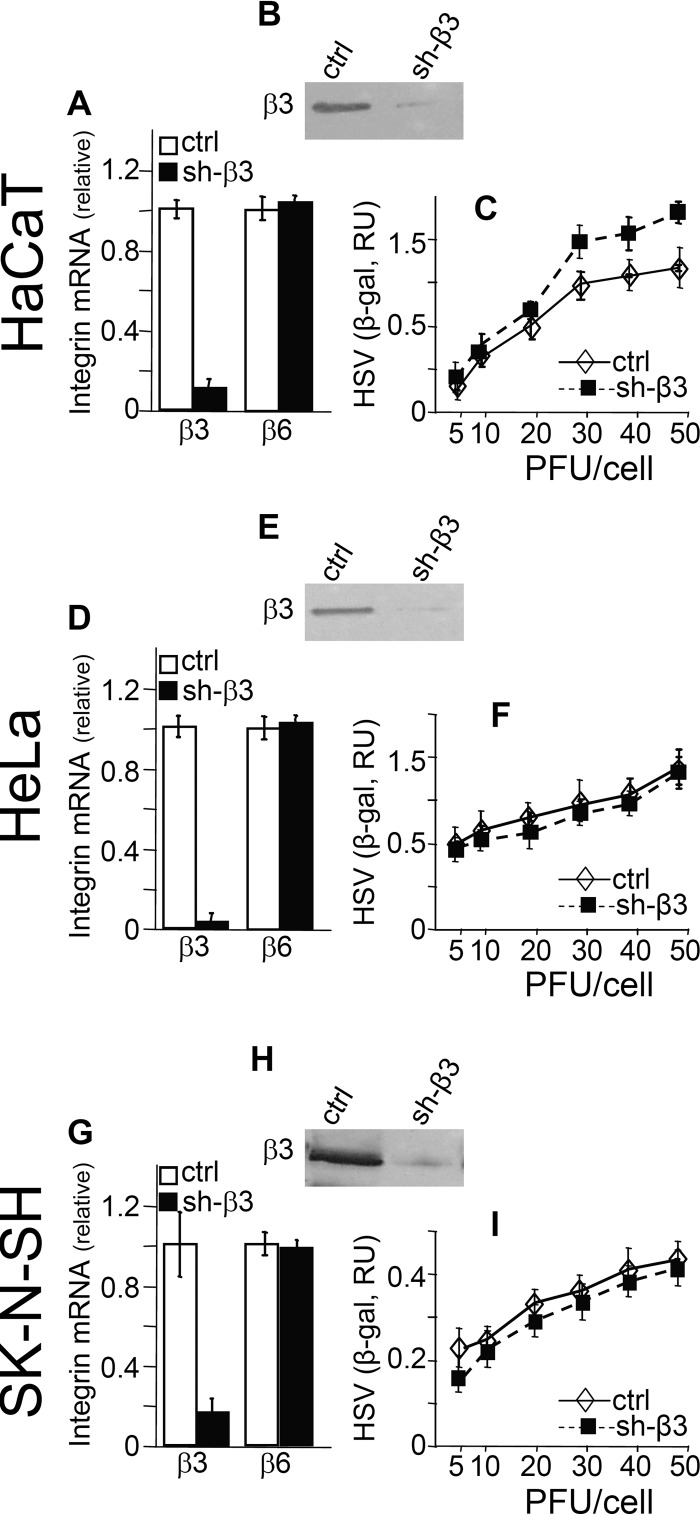Fig 1.
Silencing of β3 integrin in HaCaT, HeLa, and SK-N-SH cells and infection with the HSV recombinant R8102 of β3 integrin-silenced and control cells. Stable silencing was performed by means of lentiviruses encoding shRNA to β3 integrin (18, 25). The β3 integrin-silenced cells are indicated as sh-β3. Control (ctrl) cells received a control lentivirus with no insert. (A, D, and G) The extent of β3 integrin silencing was determined by quantitative real-time PCR (qRT-PCR) by means of the real-time PCR primers inventoried in the TaqMan gene expression assay, for ITGB3 (Hs01001469_m1) or ITGB6 (Hs00168458_m1) and GADPH (Hs02758991_g1) (Applied Biosystems). qRT-PCR was performed as described previously (18), and relative changes in gene expression were determined by 2−ΔΔCT. The results were normalized relative to control cells, for which the values were set as 1. (B, E, and H) The silencing was confirmed at the protein level by immunoblotting with polyclonal antibody (PAb) 1932 (Chemicon) to the β3 integrin subunit. The lack of off-target effect of β3 integrin silencing was determined by measuring the expression of β6 integrin, which was not changed relative to that in control cells (A, D, and G). RU, relative units. (C, F, and I) Infection of HaCaT, HeLa, and SK-N-SH was not grossly altered following β3 integrin silencing. sh-β3 and ctrl cells in 96 wells were infected with the HSV recombinant R8102, which carries a LacZ gene under the α27 promoter (26), at the indicated increasing MOI (PFU/cell), and harvested at 8 h after infection. The extent of infection was determined as β-gal expression (26), by means of o-nitrophenyl-β-d-galactopyranoside as the substrate. Each point represents the average of triplicates ± standard deviation.

